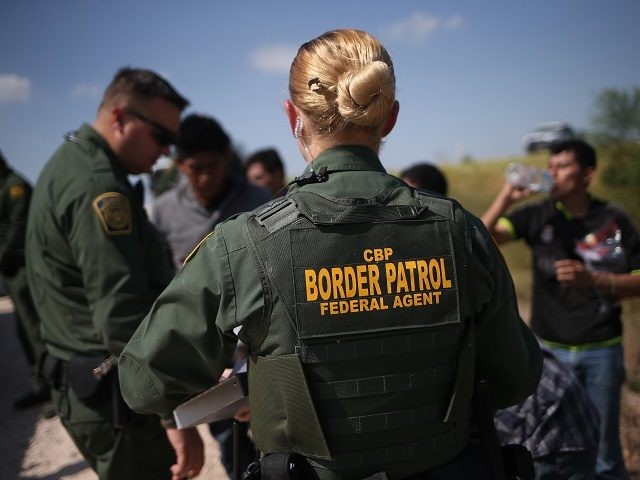 Parler
Parler Gab
Gab
- ICE achieved a historic crackdown, arresting 66,463 illegal aliens and removing 65,682, with nearly 75% of those apprehended having criminal records. This reflects a strong focus on public safety and border security.
- The enforcement prioritized threats to public safety, including 2,288 gang members, 1,329 individuals charged or convicted of sex crimes and 498 linked to murder charges or convictions. Additionally, there were over 9,600 assault cases, 6,300 DUI/DWI offenses and 1,500 weapon violations.
- The surge in enforcement was supported by expanded collaboration with state and local law enforcement through the 287(g) program, resulting in 579 pending or active agreements—a 44% increase since January. This partnership has been crucial in extending the reach of federal immigration laws.
- The crackdown addressed broader national security risks, such as the disruption of the Tren de Aragua gang and the arrest of 1,000 illegal workers and their employers, facing fines exceeding $1 million. This aligns with Trump's pledge to curb illegal border crossings, which have dropped to 1960s-era lows.
- The enforcement strategy marks a significant shift from Obama-era practices, which often prioritized noncriminal deportations. Trump's "criminal-first" approach aims to prioritize justice for victims and maintain economic stability, reflecting a commitment to restoring law and order.
“Criminal First” enforcement targets threats
The data released Tuesday reflects a stark focus on threats to public safety. Among the 66,463 arrests:- 2,288 gang members affiliated with Tren de Aragua, MS-13 and 18th Street.
- 1,329 with charges or convictions for sex crimes.
- 498 linked to murder charges or convictions.
- Over 9,600 counts of assault, 6,300 DUI/DWI offenses and 1,500 weapon violations.
Local partnerships expand enforcement reach
CE’s surge hinges on expanded collaboration with state and local law enforcement via the 287(g) program, which trains agencies to enforce federal immigration laws. ICE now has 579 pending or active 287(g) agreements nationwide—up 44% since January—with partnerships in 444 new jurisdictions. California’s San Bernardino County Sheriff’s Department, among others, has joined the effort. The strategy mirrors legislative efforts like California’s SB 54, which earlier blocked local agencies from aiding federal immigration enforcement—a policy De Leon once praised as shielding “communities safe.” But critics argue such measures hinder accountability, enabling criminals to evade justice.National security and economic stakes drive policy
Beyond criminality, the crackdown addresses broader national security risks. The FBI has designated Tren de Aragua—a Venezuelan-linked group—as a proxy destabilizing U.S. infrastructure. Meanwhile, HSI’s worksite raids, disrupting illegal labor, safeguard American jobs: 1,000 illegal workers and businesses employing them face fines exceeding $1 million. ICE’s results align with Trump’s pledge to curb illegal border crossings, which Customs and Border Protection reports are now at 1960s-era lows. Encounters dropped 95% since 2021, and successful terror suspect arrests surged 655%. “Our communities grow safer daily under President Trump and Secretary Noem,” Sheahan said.A shift from previous policies
The ICE numbers contrast sharply with Obama-era enforcement. While critics cite the 65,000 removals as mere 0.59% of the estimated 11 million undocumented, Trump’s focus on criminal aliens reverses past practices targeting minor offenders. Between 2009–2016, ICE prioritized noncriminal deportations, even for taxpaying residents. Advocates argue this “criminal-first” strategy prioritizes justice for victims—like the thousands of Americans killed by illegal immigrants—while maintaining economic stability. The White House frames the effort as fulfilling a promise to restore law and order, emphasizing metrics like the 266,000 criminal alien arrests since 2021 highlighted in Trump’s recent Oval Office address.A new era of enforced priorities
ICE’s 100-day record marks a definitive turning point in immigration enforcement, leveraging local partnerships and intelligence-driven operations to target malign actors. While debates over scale persist, the administration’s emphasis on national security and community safety reshapes the conversation—notably contrasting with prior strategies. As Lyons concluded, “We’re just getting started.” With border barriers expanded and vetting protocols tightened, the Trump team positions this phase as the foundation for long-term security, though challenges in addressing the broader undocumented population remain unresolved. Sources for this article include: JustTheNews.com ICE.gov FoxNews.comU.S. and China edge toward trade talks, but sticking points remain
By Ava Grace // Share
Apple to shift iPhone production to India by 2026 amid U.S.-China trade war
By Willow Tohi // Share
Trump ends Yemen strikes as Houthis “capitulate”, but rebels vow to keep fighting Israel
By Cassie B. // Share
Federal judge blocks warrantless arrests of suspected illegals by Border Patrol in California
By Laura Harris // Share
Governments continue to obscure COVID-19 vaccine data amid rising concerns over excess deaths
By patricklewis // Share
Tech giant Microsoft backs EXTINCTION with its support of carbon capture programs
By ramontomeydw // Share
Germany to resume arms exports to Israel despite repeated ceasefire violations
By isabelle // Share









